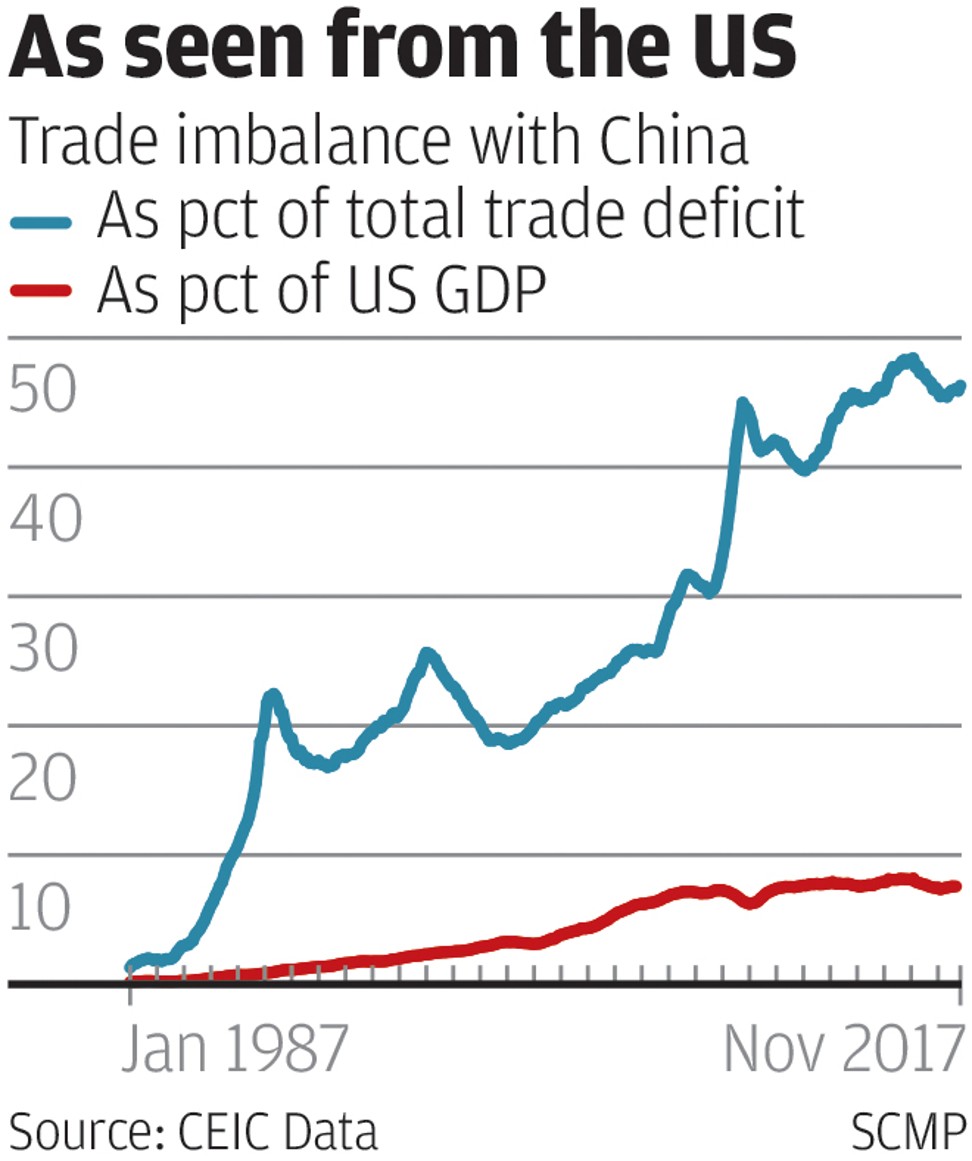
Americans love the goods China’s factories make, even as the White House itches for a trade war
China’s massive trade surplus with the US may be a headache for American officials, but there are few substitutes for the goods rolling out of Chinese factories.
Record surplus with US fuels fear of trade war
-- SCMP headline, January 13
It’s worse than it looks. Our story, quoting China’s figures, said this 2017 trade surplus with the US amounted to US$275 billion. The real figure is about US$100 billion bigger.
The difference is mostly Hong Kong. I am not about to say that the authorities in Beijing cheat on the figures outright, but they have played a little fast and loose with the facts. Goods shipped to the United States in the form of re-exports through Hong Kong are treated as exports to Hong Kong, not to the US.
These exports have nothing to do with us, of course, except that they are loaded on to ships bound for the US, at our port. The subterfuge fools no one on the other side of the ocean. The American authorities, quite rightly, treat it all as imports from China.
The first chart sets out how it all looks. The blue line represents the mainland’s merchandise trade surplus as a rolling 12-month total. The red line underneath it shows you the true portion of it that results from trade with the US. The grey line further down represents Beijing’s understated figures.
Worth noting here is that trade with the US accounted for all of the mainland’s trade surplus over most of the last eight years. With the rest of the world the mainland ran a trade deficit. Present trends suggest we may see this again soon.
The only thing to reduce the imbalance in the mainland’s favour is that these figures cover only merchandise trade, not trade in services. In services, the position is reversed with the US running a growing trade surplus with the mainland.
But last year, this services surplus still accounted for only US$38 billion. Although it brings the overall balance in favour of China down a little, the emphasis is on the word “little” here.
Look at it all from the US perspective and it looks grim, as the second chart shows. Over the last 30 years, the mainland’s trade surplus with the US has gone from accounting for barely 1 per cent of the US overall trade deficit to 46 per cent at present. As a share of US gross domestic product (GDP) it has gone from effectively nothing 30 years ago to 7.6 per cent at present. This is big.
But what is the White House to do about it for all the dark talk of taking a tougher line? The rest of the world cannot come close for many years in the future to supplying all the consumer goods this trade represents in the quantity, variety, quality and, most particularly, price that the mainland provides. US producers certainly cannot do it domestically.
And the flip side of the trade imbalance is that all the proceeds come back to the US as investment inflows from China. Could the US Congress have passed its latest budget-busting tax cuts quite so blithely without the confidence that Beijing will buy up the treasury debt to make up for it?
Trade imbalances have deeper causes than a twittering, loud-mouthed New York property developer is ever likely to perceive.
I think the remedy lies more at home than it does in China.




